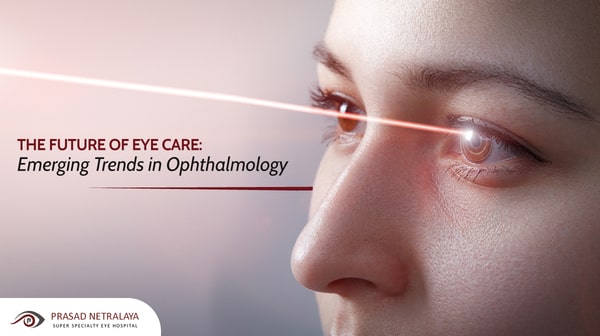Eye Center in Andalusia: Advanced Vision Treatment Services Available
Eye Center in Andalusia: Advanced Vision Treatment Services Available
Blog Article
The Pros and Cons of Various Refractive Surgical Procedures for Enhanced Eyecare

LASIK Surgical Procedure
LASIK surgery is a generally performed refractive treatment that intends to remedy vision issues such as nearsightedness, astigmatism, and farsightedness. This surgical strategy has obtained popularity as a result of its efficiency in providing people with clearer vision and reducing their dependence on glasses or call lenses. Throughout the treatment, a thin flap is produced on the cornea, and a laser is utilized to improve the underlying tissue, correcting the refractive mistake. The flap is then rearranged, enabling fast healing and marginal pain for the individual.
One of the key benefits of LASIK surgical procedure is the fast renovation in vision experienced by numerous clients. Many people observe a considerable enhancement in their eyesight shortly after the procedure, with minimal downtime required for recuperation. In addition, LASIK is known for its high success price and reduced incidence of difficulties when executed by knowledgeable cosmetic surgeons. Nonetheless, like any operation, LASIK also carries some dangers, including dry eyes, glare, halos, and under or overcorrection of vision. It is crucial for people thinking about LASIK surgical procedure to go through an extensive assessment by an eye care professional to establish if they are suitable prospects for the treatment.
PRK Procedure
The PRK procedure, also known as Photorefractive Keratectomy, is a kind of refractive surgical treatment that intends to fix vision concerns comparable to LASIK surgical procedure. Unlike LASIK, which includes creating a flap in the cornea, PRK works on the surface layer of the cornea. Throughout the PRK procedure, the outer layer of the cornea, called the epithelium, is removed to enable reshaping of the underlying corneal tissue with an excimer laser. This reshaping helps to correct refractive mistakes such as astigmatism, farsightedness, and nearsightedness.
One of the benefits of PRK over LASIK is that it gets rid of the threat of flap-related issues given that no flap is created throughout the surgery. Regardless of the longer recuperation period, PRK can be a suitable option for people seeking vision improvement surgical procedure.
SMILE Surgery
A cutting-edge refractive surgical treatment technique acquiring appeal in the field of ophthalmology is SMILE Surgery. Little Incision Lenticule Removal (SMILE) is a minimally invasive treatment that deals with vision by improving the cornea utilizing a femtosecond laser. Unlike traditional LASIK surgery, SMILE Surgical treatment involves developing a little incision in the cornea to extract a lenticule, which results in much less disturbance to the corneal framework and potentially faster healing times.
One of the key benefits of SMILE Surgery is its capability to deal with myopia (nearsightedness) and astigmatism with high precision, causing excellent aesthetic results for patients. The minimally invasive nature of the procedure also minimizes the danger of issues such as completely dry eye syndrome, making it a desirable option for individuals looking for refractive surgery.

LASEK Technique
Having discovered the advantages and factors to consider of SMILE Surgical treatment, another notable refractive surgery Full Report strategy worth examining is the LASEK Method. LASEK, which represents Laser-Assisted Subepithelial Keratectomy, is a kind of laser eye surgical treatment that aims to fix refractive errors such as myopia (nearsightedness), hyperopia (farsightedness), and astigmatism.
Unlike LASIK, LASEK does not entail producing a corneal flap. Instead, throughout a LASEK procedure, the doctor makes use of a diluted alcohol solution to loosen up the slim external layer of the cornea, recognized as the epithelium.
One of the primary benefits of LASEK is that it can be appropriate for people with thin corneas who might not be excellent prospects for LASIK. Furthermore, LASEK typically leads to very little post-operative discomfort and a quicker recovery time compared to PRK. The aesthetic recovery procedure with LASEK may be a little longer than with LASIK.
Implantable Call Lenses
Implantable Contact Lenses use a lasting vision modification remedy for individuals looking for a choice to standard get in touch with lenses click for more info or glasses. These lenses, also known as phakic intraocular lenses, are operatively put into the eye to correct refractive mistakes such as nearsightedness (nearsightedness), hyperopia (farsightedness), and astigmatism. eye center andalusia. Unlike standard contact lenses that rest on the surface of the eye, implantable contact lenses work within the eye itself, offering clear vision without the need for everyday maintenance or removal
Among the vital benefits of implantable get in touch with lenses is their permanence. As soon as placed, they can remain in the eye forever, using secure and constant vision correction. Additionally, these lenses can be an outstanding choice for people who are not good candidates for laser eye surgical procedure or who like a reversible vision improvement procedure.
Nevertheless, implantable contact lenses do bring some threats, including the possibility for cataracts or boosted eye pressure. It is critical for people considering this option to speak with an eye care specialist to identify if implantable call lenses are the best selection for their certain needs and eye health and wellness.
Final Thought
In conclusion, each type of refractive surgery has its own advantages and downsides. LASIK surgical procedure is popular for its quick healing time, while PRK treatment may be ideal for clients with slim corneas.

Generally, SMILE Surgical procedure offers an appealing choice for people looking to enhance their vision through page refractive surgical treatment.
Report this page